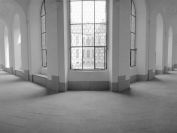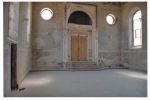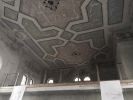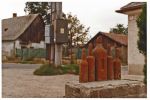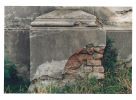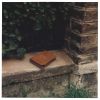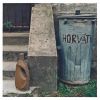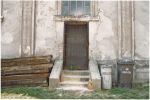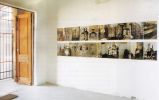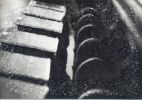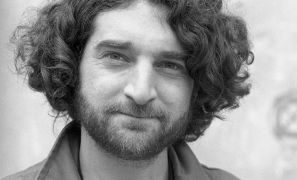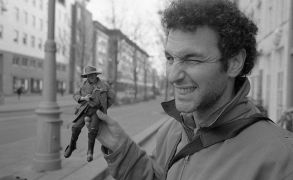under construction
Ásítás / Zívanie / Yawning
Site specific installations for the Šamorín Synagogue
Opening performance by Michal Murin and Peter Kalmus
Martin Zet - kinetic object David Miller - ironcast objects Charlie Citron - prepared photography Miloš Vojtěchovský - sound installation
Curators: Miloš Vojtěchovský, Csaba Kiss
Supported by the Czech Cultural Center in Slovakia, special thanks to Lenka Zogatová
Reminiscence
The architecture of the former Synagogue in Šamorín created framework of 4 interventions: Martin Zet suspended from the high ceiling the electrical device, a rotating hub with radiating blades. David Miller placed several cast-iron objects within, around and on the building. The Synagogue was emptied during the Second World War when Samorin’s Jewish community was destroyed in Nazi death camps:
“Desecrated, eventually used as a warehouse and later abandoned altogether, the sanctuary lost its meaning. Miller’s process of reconciling, cleansing and reclaiming is enacted throughout the site using cast bottles of detergents or in Miller’s words ‘clean souls, [missing] figures,’ cast bottles of beer, wine and liquor or ‘spirits’ as well as by cast hand tools fixed permanently to the building; as if the continuity, violated by history was by this act recreated.”
Charlie Citron’s photographs from the Prague and Pilzen synagogues were covered in wax. The sound installation Wings by Miloš Vojtěchovský was designed to serve as a complementary layer for the rest of the visible part of installations. The almost empty interior was sonically animated with the recorded sounds of the wings of flying pigeons, lift, gun shot and trains. The pigeons often nest in abandoned buildings, and the sound also resembles the the invisible — perhaps angels.
The Jewish community built a new synagogue on the eastern outskirts of town In 1912. The local community had 318 members in 1930 but was devastated during the war. Šamorín's former synagogue stands at the heart of a traditional architectural setting that also comprises a former Jewish school and other Jewish communal buildings. The Jewish cemetery is located nearby. The synagogue, a rather small building was spared twice from complete destruction. The German army, which used the building as an ammunition dump, wanted to destroy it when it retreated from town in 1945 – but did not do so. In the 1990s, after the building had stood neglected for decades, Csaba and Suzanne Kiss stepped in and saved it from demolition. They restored the synagogue as a precious historical site, conserving evidence of the damage it had suffered, and established there the At Home Gallery, a center for contemporary art and cultural dialogue.
The text by Jo Williams about the installation was published in the journal Umělec.
